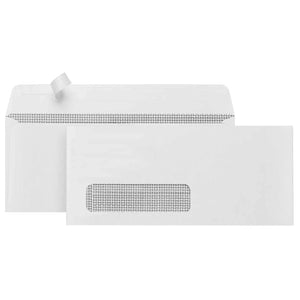Is your organization introducing skip level meetings? Or are you currently wondering what is a skip level meeting, anyway? Don’t worry; there’s not much actual skipping involved. 😅
A skip level meeting is simply a one-on-one meeting between two members of an organization who rarely interact on a daily basis, or potentially, two people who work for the same company but have never even met. They’re an opportunity for senior managers or business leaders to check the pulse on company morale, and they help all members of the organization, regardless of their position, feel seen, heard, and valued.
In this post, we’ll break down what a skip level meeting is and how both the senior and junior team members can best prepare, including a list of appropriate skip level meeting questions.
What is a Skip Level Meeting?
So, what are skip level meetings? A skip level meeting is a type of one on one meeting between an employee and their manager’s manager—two people who don’t normally interact on a day-to-day basis. Since these meetings take place without the employee’s direct manager, they are called skip level meetings, since both participants are skipping a level in the hierarchy of the organization.
The employee is skipping over the level of their manager to interact with someone in upper management, and the senior manager is skipping a level to interact with their direct report’s direct report. It’s quite common for upper and lower levels of an organization to rarely get a chance to speak to one another. The skip level meeting provides an opportunity for those at different levels to engage more deeply than the occasional hello in the hallway or interaction at an all hands meeting.
There are many benefits to skip level meetings, including building cross-company rapport, making every voice feel heard, prioritizing feedback, and fostering a continuous improvement mindset.
Skip Level Meeting Benefits:
- Managers gain insight into what’s happening on the ground.
- Employees are able to feel seen and valued.
- Managers can better evaluate employee morale at all levels.
- People who don’t normally work together get to connect.
- Transparency is created across the organization, boosting trust and morale.
- Every level of the business can align on important goals and values.
- Feedback is collected from all directions.

How to Prepare for a Skip Level Meeting

Work on a Collaborative Agenda
Since skip level meetings involve members of senior management whose time is often limited, creating a 1 on 1 meeting agenda is a must. An agenda ensures the meeting stays on track and keeps within the allotted time frame, objectives are met, and action items are created.
It’s important for the agenda to be collaborative so that both parties can ensure the questions they want answered are just that—answered. Neither team member, no matter their seniority, wants to leave the meeting feeling like they didn’t get all they could have out of it, and no one wants to be put on the spot with a section of the meeting they didn’t expect and feel ill-equipped to answer.
Collaborative agendas prevent these surprises, and they ensure both attendees are on the same page about what to expect. Ensuring agendas are collaborative also promotes meeting equality since both team members are participating in establishing the structure of the meeting. Being a part of the process helps both meeting attendees have ownership over the outcome.

Prepare Skip Level 1-on-1 meeting questions
If neither party has any questions prepared, it’s going to be a pretty dull and silent meeting. A key part of preparing for a skip level meeting is figuring out some good questions to ask.
What do you want to know about the person you are meeting with? What can you learn about them before the meeting so that you can dig deeper during the meeting? How can you utilize the meeting to both build rapport and learn more about the business?
Below we’ve included a list of questions employees can ask upper management, as well as some questions a senior manager can ask the employee. Consider how you can personalize your questions based on what you already know about the team member you’re meeting with.
Questions for managers to ask employees during a skip level meeting:
- What do you like most about your job?
- What do you like least about your job?
- What are your favorite tasks at work?
- What are your least favorite tasks at work?
- Do you have any hobbies?
- What is the first thing you would change if you ran this company?
- Is there anything you would change about our company culture?
- Are you happy with your current role, or do you hope to advance through the ranks?
- Where do you see yourself in five years? In ten years?
- What’s something your manager has done to inspire you?
- Do you ever feel burnt out in your current role? Have you spoken to your manager about this?
- Do you feel like you have too much work, or do you hope for more responsibility?
- Do you have skills that you feel are underutilized in your current position?
- If money is no object, what software, tools, or resources do you feel would help optimize your performance?
- Would you recommend your family and friends seek employment here?
- Do you feel pressured not to take your allotted vacation time?
- What work from the past year are you most proud of?
Questions for employees to ask leadership during a skip level meeting:
- Do you have any hobbies?
- What’s the last book you read?
- Do you have any recommendations for me? (Books, podcasts, shows, movies, etc.)
- Where do you see the company in five years? In ten years?
- What are you most proud of about the company?
- What would you change about our company culture?
- Are any team building events on the horizon?
- Which manager from your past most inspired you? Why?
- Are their training opportunities available for me?
- Is there a budget available for participating in conferences or networking events?
- Is there anything I can do to be more supportive of new hires?
- What can I do to make your job easier?
- Is this the job you expected to have when you started with the company?
- How has your role changed over the years?
- How has the company changed over the years?
- What is your top personal and professional goal for this year?
- How do you feel about the organization’s goals? Are we on track to meet them?

Make it a Safe and Comfortable Experience
In order to have a productive and informative meeting, the senior-ranking person must make sure their coworker feels as welcome as possible. This is because it can be understandably intimidating and uncomfortable for an employee to sit down with their manager’s manager and be expected to ‘speak freely’ about how things are really going from their perspective.
A skip level meeting is not a performance review , and this must be made abundantly clear to the employee. It must be a safe space in order for the lesser-ranking coworker to feel comfortable openly discussing what they think is working, what isn’t, what their goals are, and so on.
This is why it’s important to break the ice and speak about more things than simply work. How does the employee like to spend their free time? Do they like movies, sports, music, cooking, gardening, dancing, or traveling? It’s important to do what you can to find common ground. What’s something you both have in common?
📚 Curious to know how you can best break the ice? Learn about being approachable at work in our Guide to Water Cooler Talk.
Be extremely transparent about the purpose and goals of the meeting. You don’t want it to be mistaken for a review of their performance, and the employee needs to know that the skip level meeting is a confidential, safe space to speak openly and provide feedback.
Run Better Meetings
💡Read our tips and suggestions for how to get the most out of your note-taking during any type of work meeting: How to Take Effective Meeting Notes.
💡If you’re unsure about how to organize or set up your meeting, read our guide to Setting a Weekly Team Meeting Agenda.
Want to manage a happy, healthy workplace? Follow our office supplies blog for the latest team building advice, office strategies, industry trends, and more.
If you have any questions or want to talk to someone about office supplies, email us or connect on Twitter, Facebook, or Instagram.
 For more informative articles about office supplies, subscribe to our email newsletter!
For more informative articles about office supplies, subscribe to our email newsletter!
Never fear, you won't begin receiving daily sales emails that belong in a spam folder. Instead, we promise a fun weekly roundup of our latest blog posts and great finds from across the web. And if you lose interest, it's always easy to unsubscribe with a single click.









